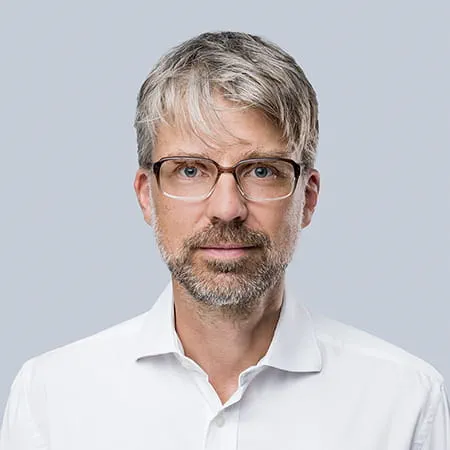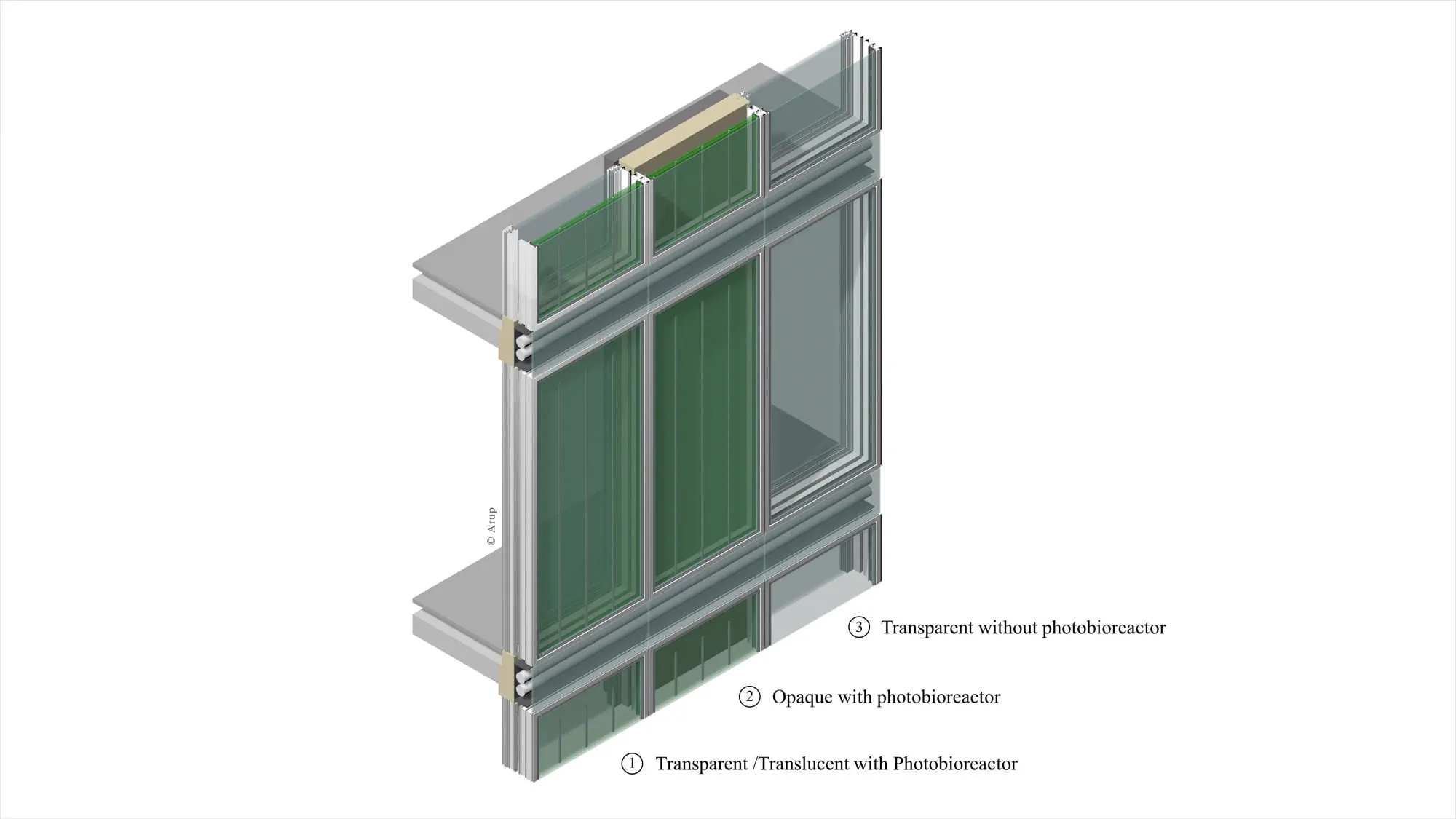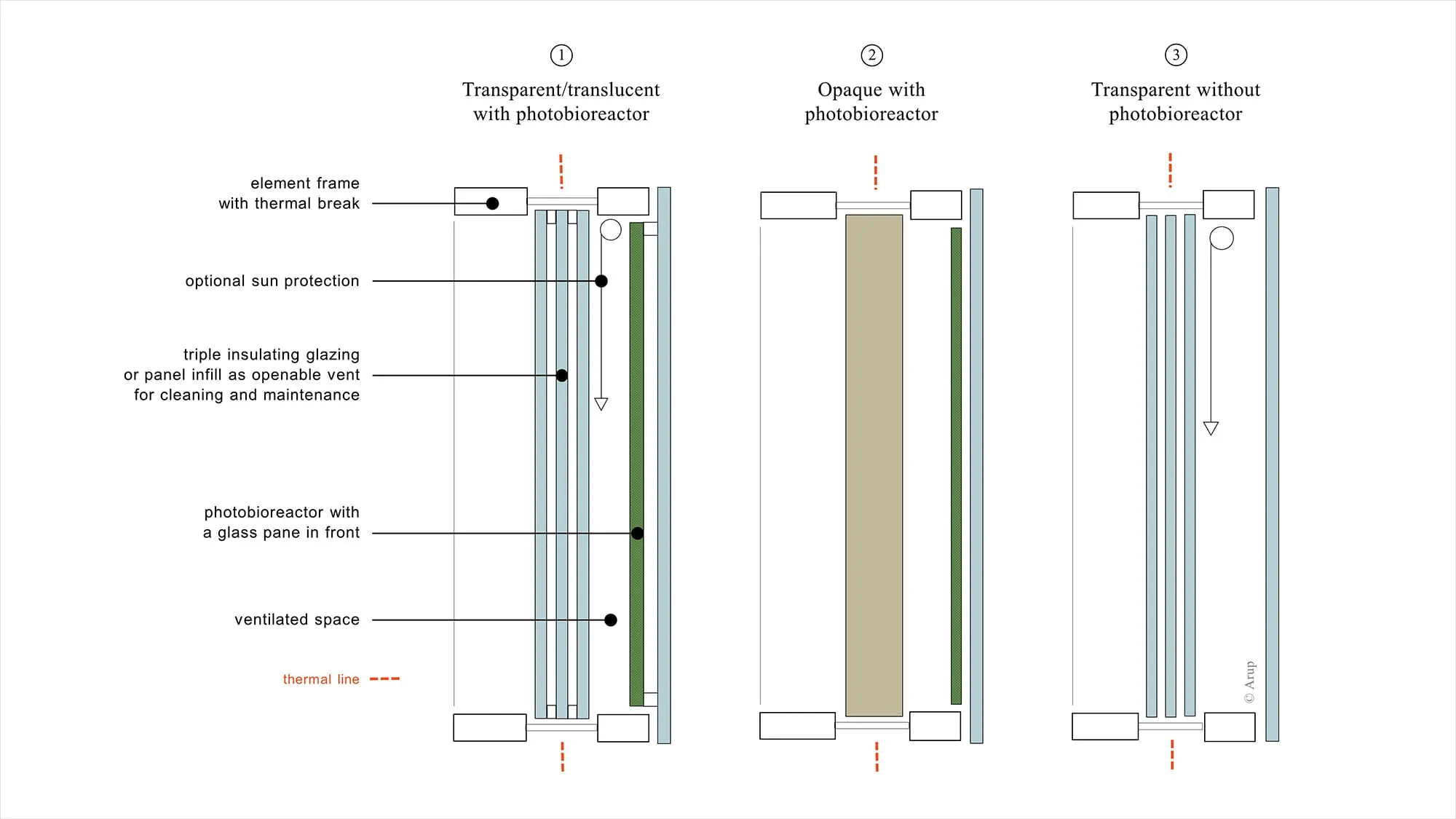This week at the Glasstec trade fair in Düsseldorf, Arup – alongside our research partners – presented a new generation of bioenergy façades. The research team included Technische Universität Dresden, SSC GmbH, Pazdera AG, and ADCO Technik GmbH.
The concept of the bioenergy façade is unique: microalgae are cultivated in a nutrient rich medium inside glass façade panels, thus producing heat and biomass.
The BIQ-House, a pilot project built for the 2013 International Building Exhibition, had already proven the technical feasibility of the façade system. Following further research, aesthetic and technological developments, the bioenergy façade system opens up new possibilities for architectural design.
Slimmer, lighter, more flexible
The façade elements of the BIQ-House were clamped together and installed as external louvers in front of the wall. In the new design, the glass elements of the bioenergy façade are bounded together and the reactors are integrated into the thermal envelope. This makes the entire construction slimmer, lighter and more flexible in terms of design.
There are three design options available: A translucent version, which allows the green colouring of the algae to be experienced in the interior, an opaque solution, in which the algae serve as design elements on the outer façade, and a transparent frame, which ensures undisturbed views out. Iridescent colours with different incidence of light as well as rising gas bubbles make the glass elements appear lively. A fourth option is to install the glass elements in front of an opaque insulated wall.


